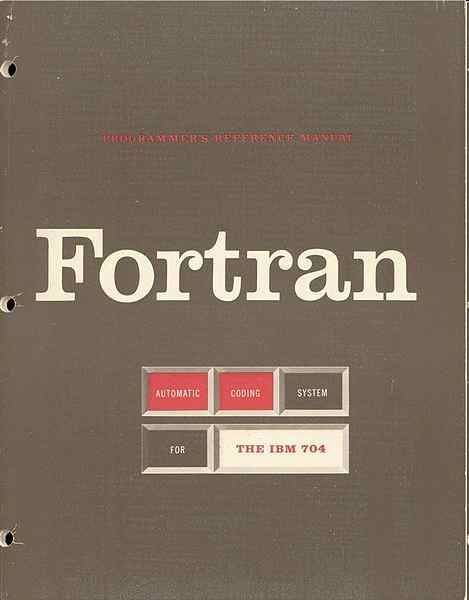
Fortran and COBOL: The Legacy Languages Making a Comeback
In a surprising turn of events, two legacy programming languages, Fortran and COBOL, have re-entered the TIOBE Index Top 20. This is a remarkable achievement for languages that were first released in the 1950s. In this article, we’ll explore the reasons behind their resurgence and what this means for the programming community.
Fortran: The Original High-Level Language
Fortran, short for “The IBM Formula Translating System,” was first released in 1956. It was designed specifically for the IBM 704 by a team led by John Backus and was one of the first compiled computer languages. As the first high-level computer language, Fortran influenced many subsequent languages and every single language that compiles an expression owes a debt to Fortran.
 The Fortran manual, a testament to the language’s enduring legacy.
The Fortran manual, a testament to the language’s enduring legacy.
Fortran’s popularity can be attributed to its ability to handle numerical and mathematical computations with ease. It has been widely used in various fields, including scientific research, engineering, and numerical analysis. The language’s ability to evolve with the times has contributed to its continued relevance.
COBOL: The Business-Oriented Language
COBOL, short for “COmmon Business-Oriented Language,” was first released in 1959. It was designed to address the need for a standardized programming language that could be used to develop business applications across different mainframe computers. COBOL’s popularity can be attributed to its ability to handle complex business logic and its widespread adoption in the financial and insurance industries.

The Resurgence of Legacy Languages
So, why are Fortran and COBOL making a comeback? The answer lies in their ability to handle complex computations and business logic with ease. In an era where computational power and data analysis are becoming increasingly important, these legacy languages are finding new relevance.
The TIOBE Index, which measures the popularity of programming languages, has seen a significant increase in Fortran’s popularity, with the language rising to its highest ever position at #10. COBOL, on the other hand, has re-entered the Top 20 after a brief hiatus.
The reasons for their resurgence are varied, but one thing is clear: these legacy languages are not going away anytime soon.

The Future of Legacy Languages
As the programming landscape continues to evolve, it’s clear that legacy languages like Fortran and COBOL are here to stay. Their ability to handle complex computations and business logic with ease makes them an attractive choice for developers and organizations alike.
In conclusion, the resurgence of Fortran and COBOL is a testament to the enduring power of these legacy languages. As the programming community continues to evolve, it’s clear that these languages will play an important role in shaping the future of software development.
 A Python developer at work, a testament to the evolving nature of programming languages.
A Python developer at work, a testament to the evolving nature of programming languages.















